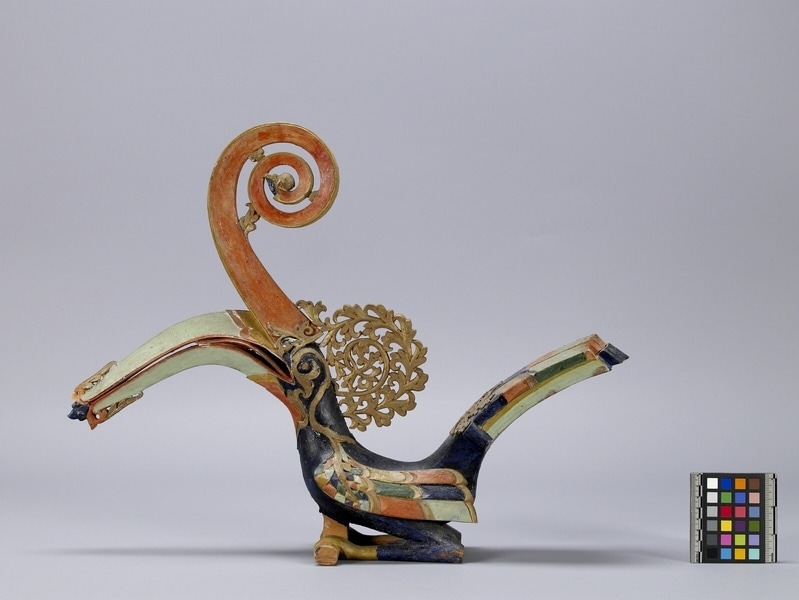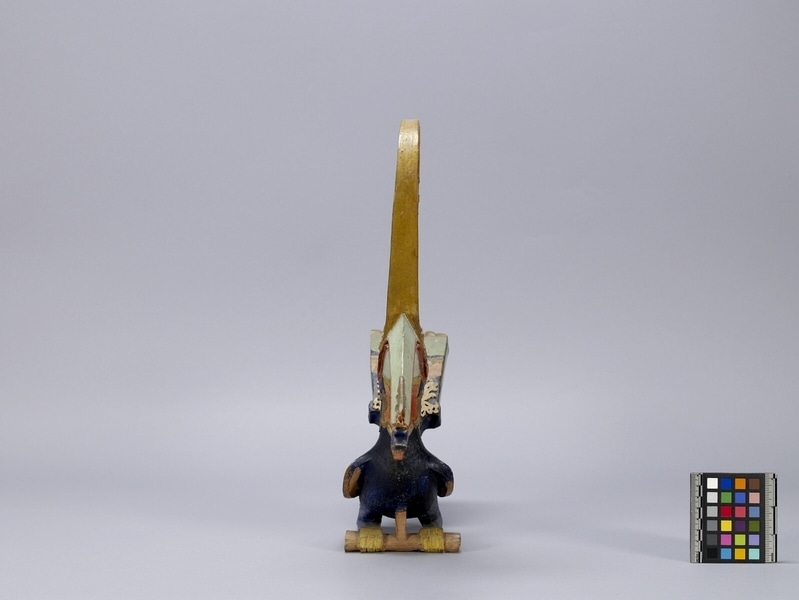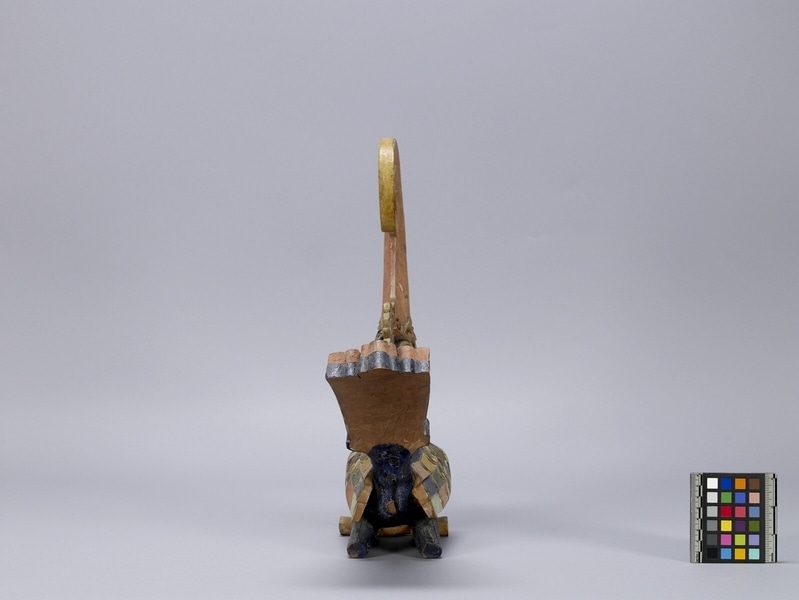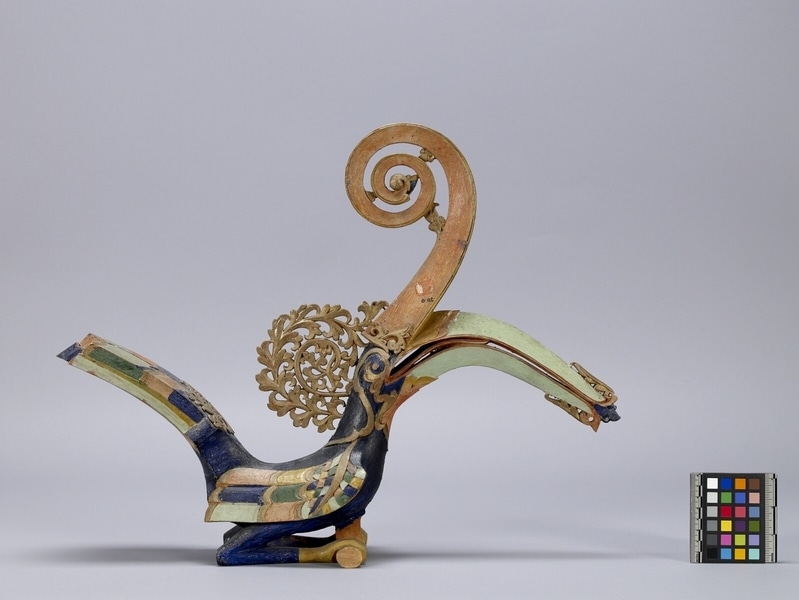Hornbill Figure Item Number: B122 from the MOA: University of British Columbia




Description
Dark blue-black carving of a rhinocerous hornbill, with a large, mint green beak. Elaborate crest on the head with a spiral pattern on top and a floral motif on the back. Wings and tail are dark blue-black, orange-pink, dark and mint green, and yellow accented with gold. Legs bend backward and then horizontally, straight, outward with the yellow claws holding onto a bar.
History Of Use
This bird was of great cultural importance to the Iban people; once associated with headhunting raids, it was later incorporated into the Gwai Kenyalang, a festival held at the end of the rice harvest. The kenyalang is publicly displayed during the festival and people make offerings to it in the hopes of securing a bountiful harvest.
Narrative
The donor collected this carving in the early 1920s during his travels through Sarawak, on the island of Borneo.
Iconographic Meaning
According to Burnett, this figure is meant to represent Pulang Gana, the god of the soil.
Item History
- Made in Sarawak, Malaysia during 1920
- Collected between 1895 and 1927
- Owned by Frank Burnett before 1927
- Received from Frank Burnett (Donor) on July 25, 1927
What
- Name
- Hornbill Figure
- Identification Number
- B122
- Type of Item
- figure
- Material
- alstonium wood and paint
- Manufacturing Technique
- carved and painted
- Overall
- height 41.0 cm, width 11.2 cm, depth 53.5 cm
Who
- Culture
- Iban
- Previous Owner
- Frank Burnett
- Received from
- Frank Burnett (Donor)
Where
- Holding Institution
- MOA: University of British Columbia
- Made in
- Sarawak, Malaysia
When
- Creation Date
- during 1920
- Collection Date
- between 1895 and 1927
- Ownership Date
- before 1927
- Acquisition Date
- on July 25, 1927
Other
- Item Classes
- carvings & sculpture
- Condition
- good
- Current Location
- Case 75
- Accession Number
- 2191/0326